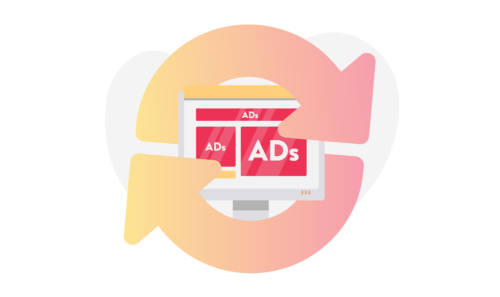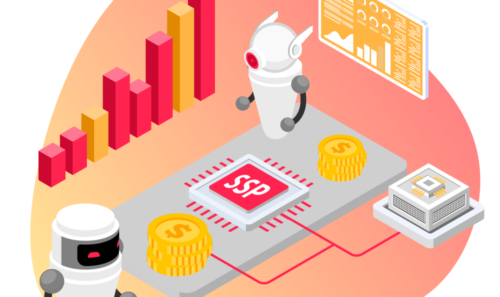Header Bidding: What, How & Why More Popular Than 09/11 in Google
Header bidding is one of the most talked-about topics in the programmatic field. It seems like nearly every digital advertising conference is dedicated to discussing the latest header bidding trends and techniques. And with good reason – header bidding has quickly become a popular and effective way for publishers to maximize their ad revenue. But what exactly is header bidding, and why has it become such an essential tool for online advertising?
In this article, we’ll explore the fundamentals of header bidding, how it works, and explore if and how it can benefit publishers.
You can even watch the popularity of the header bidding on Google. Yesterday I checked the most trending stories in Google in the previous 24 hours. Except for many sports queries I found, the answer was pretty obvious: 09/11 anniversary. So I checked again how popular 09/11 was in the last 30 days and compared it with such terms as programmatic, real-time bidding, and header bidding – as they belong to the same family, and I wasn’t sure which of them is most recognizable globally. The results were a kind of shock for me! In a 30-day period before the 15th anniversary of the World Trade Center attack, many more users were searching for the header bidding than for 9/11! Anyway, look at it by yourself:

The popularity of header bidding, programmatic, real time bidding and 09/11 queries in Google, Aug 11th – Sept 11th 2016
What is header bidding?
OK, so you know header bidding has been all the rage. But what is it in real?
Header bidding is a programmatic advertising technique that allows publishers to sell their ad inventory to multiple demand sources simultaneously before sending ad requests to their ad server. Unlike the traditional method of waterfall auctions, where demand sources are prioritized in a pre-determined order, header bidding enables all demand sources to bid on the same inventory at the same time.
It was invented a couple of years ago. However, it gained momentum recently. Right now, solutions based on header bidding have become publishers’ bread and butter in the field of programmatic.
But it is not intended for everyone. If you use it smartly, it will uplift your revenue. If not – it’s the first step to catastrophe, and the number of unsold ad impressions will rise dramatically. So before you start, you better be an upper-intermediate or an advanced in programmatic. Just saying.
How header bidding works?
The header bidding democratizes the selling of single ad impressions in programmatic. It gives publishers access to many buying markets, including SSP. However, a fundamental rule of header bidding is that every ad impression put up for auction must be sold on the platform a buyer has proposed. That may seem obvious, but it will turn out it’s not.
What happens next? The software chooses the best offer, serves the ad impression, or compares it with your leading SSP or ad exchange, usually DoubleClick Ad Exchange by Google. That makes it possible for you to auction a single ad impression simultaneously on several SSPs (e.g. Pubmatic, AppNexus, WideOrbit, etc.) and ADX without waterfalling. And sell it there where the price is the highest.
In that case, there is no second auction, though. The winning ad network pays an amount of its bid. This detail is important in the header bidding model and affects RTB demand platforms.
Is header bidding ideal?
Well, let’s leave it on the side of semantic or philosophical discussion if there is something like an ideal solution. For sure, when speaking about header bidding, we must remember about technology cost. What is more, there are also expenditures caused by further system management. If we want to implement the header bidding, these elements should be considered at the very beginning and compared with an expected rise in revenue.
The header bidding is not for everyone. However, large publishers use it daily. Why? It allows them to find an ad campaign best fitting their inventory potential. This means thanks to the header bidding, and they find an ad campaign with the highest price.
On the other hand, advertisers benefit from header bidding, too. They have access to a bigger amount of inventory.
And where’s the catch?
The most common anxiety is longer page loading. Well, a script must query some additional SSP, wait for their answer, and a browser must connect with ad servers. It takes time, that’s true.
How long exactly? Usually, the maximum response time is 500 – 800 ms (0.5 – 0.8 sec). It is more or less two or three eye blinks. You can’t even notice it when you pull away at traffic lights. When you wait for a website to load, which normally takes a few seconds, it’s time that cannot make you worry.
But if you are a buying algorithm, this is an entire age for you! It’s long enough to make a deal and pay a publisher an additional 30%. And if not? The time is over, and you start regular bidding, i.e., on Double Click Ad Exchange. You should also consider this in perspective of expected higher revenue.
You must remember quitting the header bidding is much easier than setting it up. That is why it is recommended to check in advance which inventory is sold on which SSP platforms. The next step is to work out optimal settings, including the header bidding in your programmatic stuck. And last but not least, it requires constant management to make it work on all cylinders. Otherwise, you will just lose precious ad impressions. And your revenue line would be as small as the curve with a number of 09/11 queries on the graph above.






